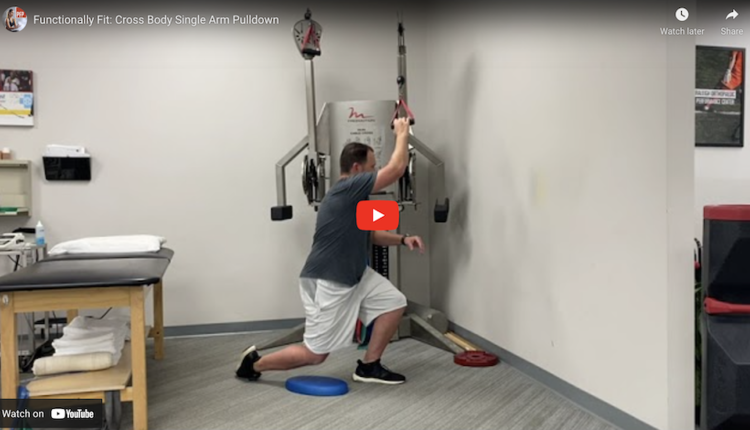Improving rotational strength and stability in the torso, shoulders and hips is paramount for athletes. The ability to produce force and maintain hip/core stability with asymmetrical and/or isolated upper body movements is important for athletes. This exercise will demonstrate how to accomplish that using the MostFit Core Hammer.

Execution: Begin in a push-up position with the hands on the core hammer shoulder width apart and the right hand flush against the end of the hammer. The left hand will initially be palm down and open felt against the handle. Perform a push-up to a depth where the upper arm is parallel to the floor (elbows do not extend beyond the plane of the body). Next, as you ascend and fully extend the elbows lift the lower handle off the floor approximately 45 degrees. Both elbows will be somewhat flexed as more weight shifts onto the right shoulder.
Pause briefly at the top, and then move back into the push-up again. Perform 3-5 repetitions initially and work up for reps or time as able based on form and fatigue. Note: the hand on the lower part of the handle will alternate from a flat palm to closed grip depending on ascent or descent.

Progressions:
1. Increase the pause duration at the top or total time under tension by slowing the cadence throughout
2. Narrow the base of support by moving the feet closer together
Regression: the primary modification is to perform this exercise on the knees
Application: This exercise will facilitate upper body and pillar strength/stability, as well as improving dynamic hip stability. Learning to maintain stability throughout the entire kinetic chain with asymmetrical upper body loading is very demanding, and the Core Hammer offers a unique challenge in this exercise.
This can be used with swimmers, wrestlers, overhead athletes, mixed martial artists and soldiers looking to enhance performance and total body strength/stability. In addition, it can be used in intermediate to advanced individual or group fitness settings.
It should be noted that this is an advanced strengthening exercise that should not be used with novice clientele or those with active shoulder, hip or back pathology. Monitoring form and cuing out of compensations and loss of true stability is critical to avoid unwanted strain.



















